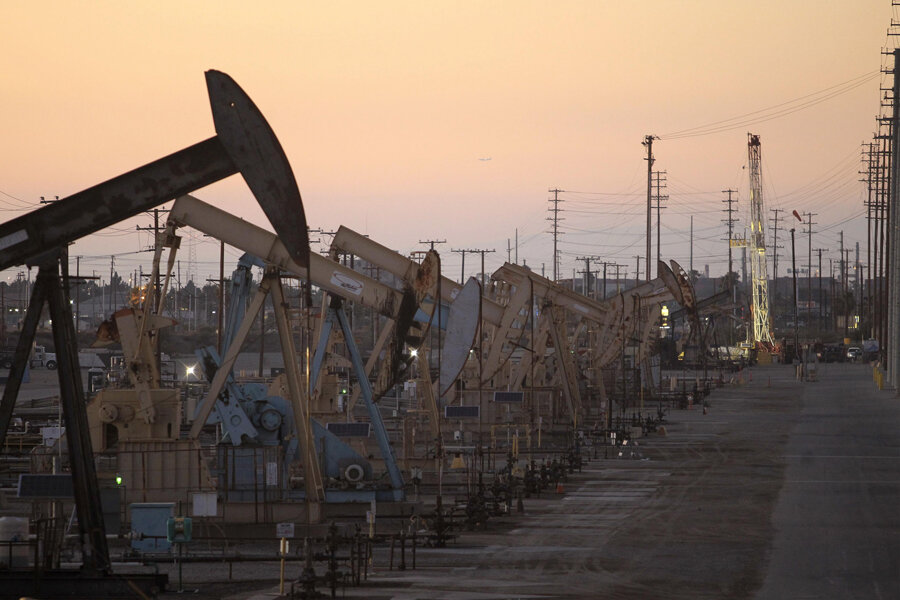Oil prices have hit their floor. Here's why.
If you are paying attention, you will be aware that oil prices have been falling dramatically since the end of June, losing over 20 percent from the highs at that time. This is bad news for investors in the energy sector and for the companies that produce the black stuff, but for the global economy as a whole it will provide an unexpected boost to growth. All energy costs are benchmarked against oil, so declining oil prices equate to declining energy costs, and that is a positive for growth. Whether you are benefitting from that or worried about your energy investments, however, there is one obvious question…”How low can it go?”
The answer, it seems, is not much lower.
The drop has been caused by two factors, one on the supply side, and one on the demand side. Supply of oil has been growing as unconventional recovery methods, primarily hydraulic fracturing of “fracking”, have gained ground, particularly in the U.S. At the same time, the growing demand for oil has come into question due to a slowing growth rate in China and the prospect of deflation in Europe. Economics 101 tells us that if supply is increasing faster than demand, price will fall. (Related: OPEC & Russia’s Vulnerability and America’s Ingenuity)
Ultimately, though, the reason oil prices have continued to fall is because OPEC has allowed them to. That may sound somewhat cynical, but even as production in the U.S. and other nations has grown, the fact remains that OPEC member nations control 81 percent of the World's proven oil reserves. The U.S. may have overtaken Saudi Arabia as the world’s largest current producer, but the OPEC countries combined still call the shots.
It is interesting then that a prominent Saudi oil official was talking up the price this weekend according to this report in the financial times. The drop in oil prices really gained ground a couple of weeks ago when the Saudi government said that they weren’t going to act to cut production and bolster prices, so any suggestion of a turnaround is significant. Their attitude is understandable. They have a very low cost of production for their abundant oil, so allowing prices to fall as a lesson to America and other upstart frackers makes perfect sense, but there is a limit.
Saudi Arabia and many other major OPEC producers face a problem. The actual cost of extracting oil may be low, but that doesn’t mean that they would be happy with oil at say $50 per barrel. They need prices to remain somewhat elevated to pay for massive social programs that oil revenues fund. The “Arab Spring” showed what can happen if a populace is unhappy, even in what looked before like a relatively stable nation ruled by one party or family, so massive cuts in these programs are not an option. (Related: Saudi Arabia: Producing More Crude, Selling Less?)
An IMF Gulf Cooperation Council report from October of last year indicates that at their baseline price of just over $80 per barrel in 2018 the budget of Saudi Arabia would be balanced.
Anything below that and the country would be in deficit, meaning that some of those social programs essential to preserving stability would be in danger.
Of course it could be that the global economy, and therefore demand for oil will collapse completely and no amount of production cuts by Saudi Arabia and other OPEC nations will make any difference, but that looks unlikely. It is far more likely that things will stabilize and, faced with cuts to social programs that they cannot afford to make, Saudi Arabia will lead the call for OPEC production cuts. That won’t be enough to drive oil back up to over $100 in a hurry, but it should stop the freefall.
By Martin Tillier of Oilprice.com
More Top Reads From Oilprice.com:
- 8 Reasons For Our Oil Price Predicament
- Oil Market Complexity Means Prices Make The Story
- Oil Price Recovery Will Be Slow, Steady And Painful
Source: http://oilprice.com/Energy/Oil-Prices/Why-Oil-Prices-Are-About-To-Settle.html






